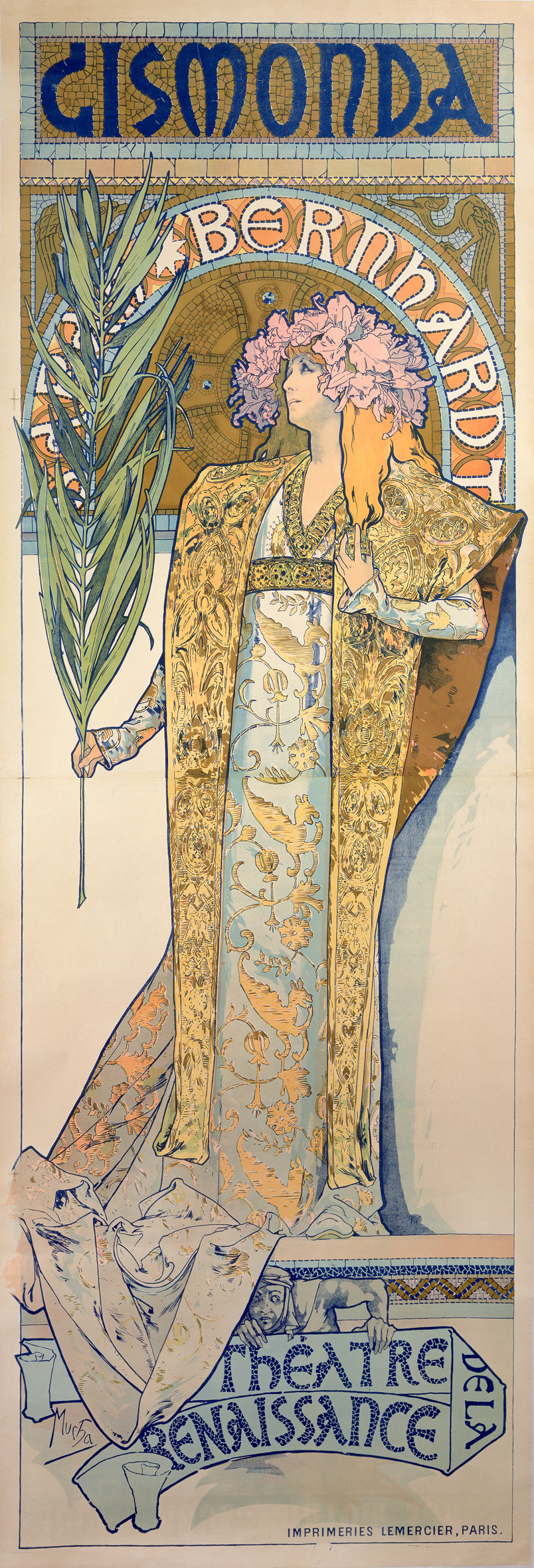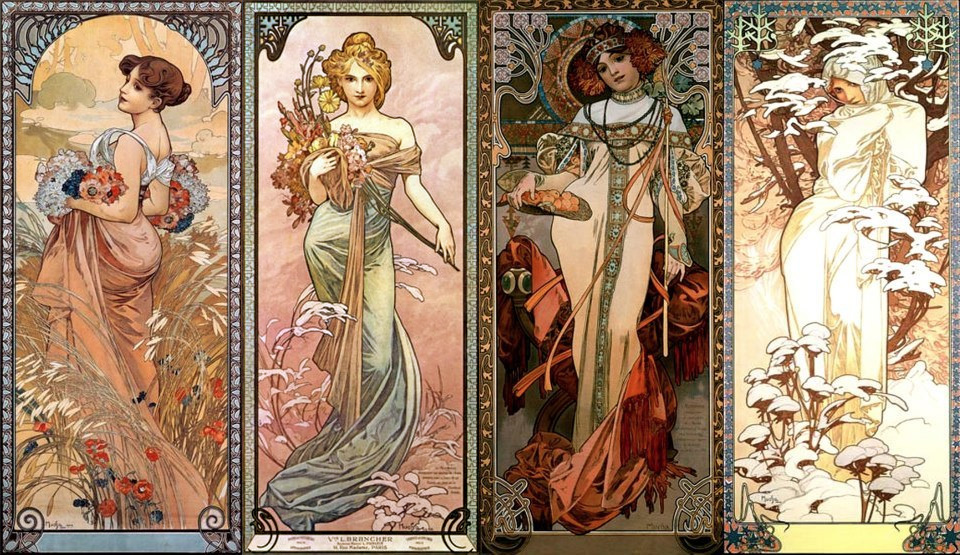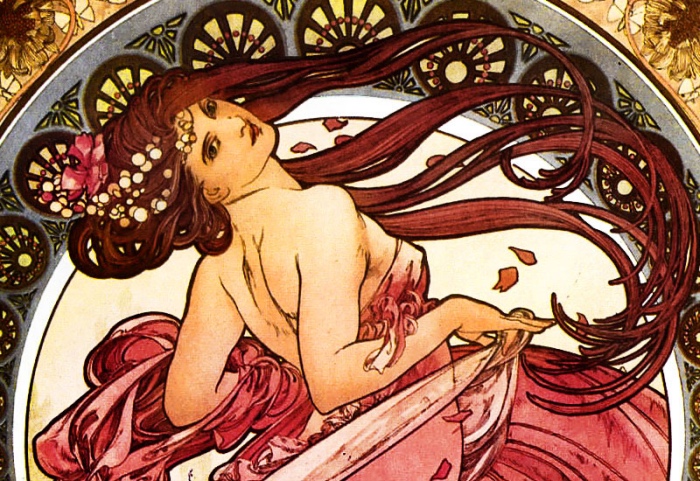
How can art convey social and cultural change? Welcome to a journey through time and space that takes us to late 19th century Paris, a vibrant city in the midst of change. In this historical context, that of the Belle Époque, there are deep roots that exalt industrial progress and challenge social conventions. In this post, I tell you how the artist Alphonse Mucha redefined the image of women through the natural and floral element in his unique artistic style, which would later bear his name: the Mucha style.
The Women of Alphonse Mucha and the Women’s Revolution of Art Nouveau

Mucha, Le quattro stagioni (1896)
In the period of extraordinary development known as the Belle Époque, Art Nouveau represented a return to the purity and beauty of natural forms.
In this context, Mucha created a visual language in which women, wrapped in intricate floral motifs, became the real protagonists.
In an era when women began to break the shackles of social conservatism, Mucha celebrated their emancipation by combining elegance and sensuality in his works. In Paris, the capital of art and culture of the time, a young Mucha rode the wave of innovation with his elaborately detailed advertising posters depicting women as ethereal creatures full of charm.
THE WOMEN OF MUCHA AND ITS INSPIRATIONAL MOTIFS: BETWEEN EAST AND WEST
Positioning himself in the throbbing heart of Paris, Mucha became the pioneer of a new artistic language. Among his sources of inspiration, Japanese art plays an important role. Using curved lines and well-defined contours that transform incessantly, each element of his work invites the viewer to follow a visual path.
A prime example are his theatre posters made for Sarah Bernhardt, the most famous French actress at the time. In these posters, the simple and refined elegance of his art merges with the Gothic style and the style of the Pre-Raphaelite artists, creating a dialogue between past and present.
LITHOGRAPHS AND THE PRIMORDIAL FORCE OF NATURE
In his decorative lithographs, Mucha expresses the primordial power of nature.
Mucha’s women are immersed in dreamlike settings populated by water lilies, goddesses and other natural elements. Their hairstyles are elaborate, their dresses sumptuous and princely, and their postures imbued with dignity and courage.
In particular, the ‘Four Seasons’ series is a masterpiece that exemplifies Mucha’s talent for creating a visual dance that follows the flow of time and begins cyclically again, thus linking each individual work within a broader theme.
WOMAN IN THE NEW CENTURY ACCORDING TO MUCHA
With the beginning of the 20th century, woman acquires a new role in society: strong, bold and dynamic, but at the same time retaining her delicate sensitivity.
This duality is beautifully evoked in Mucha’s paintings, where woman, despite industrialisation and urbanisation, rediscovers her deep connection with nature.

Mucha’s women are not only beautiful, and his works are not only a tribute to female beauty and nature, but also a powerful communication tool celebrating the emancipation of women in an era of great social and cultural change. Through her art, Mucha invites us to recognise and appreciate the complexity and depth of women’s role in a changing society.

